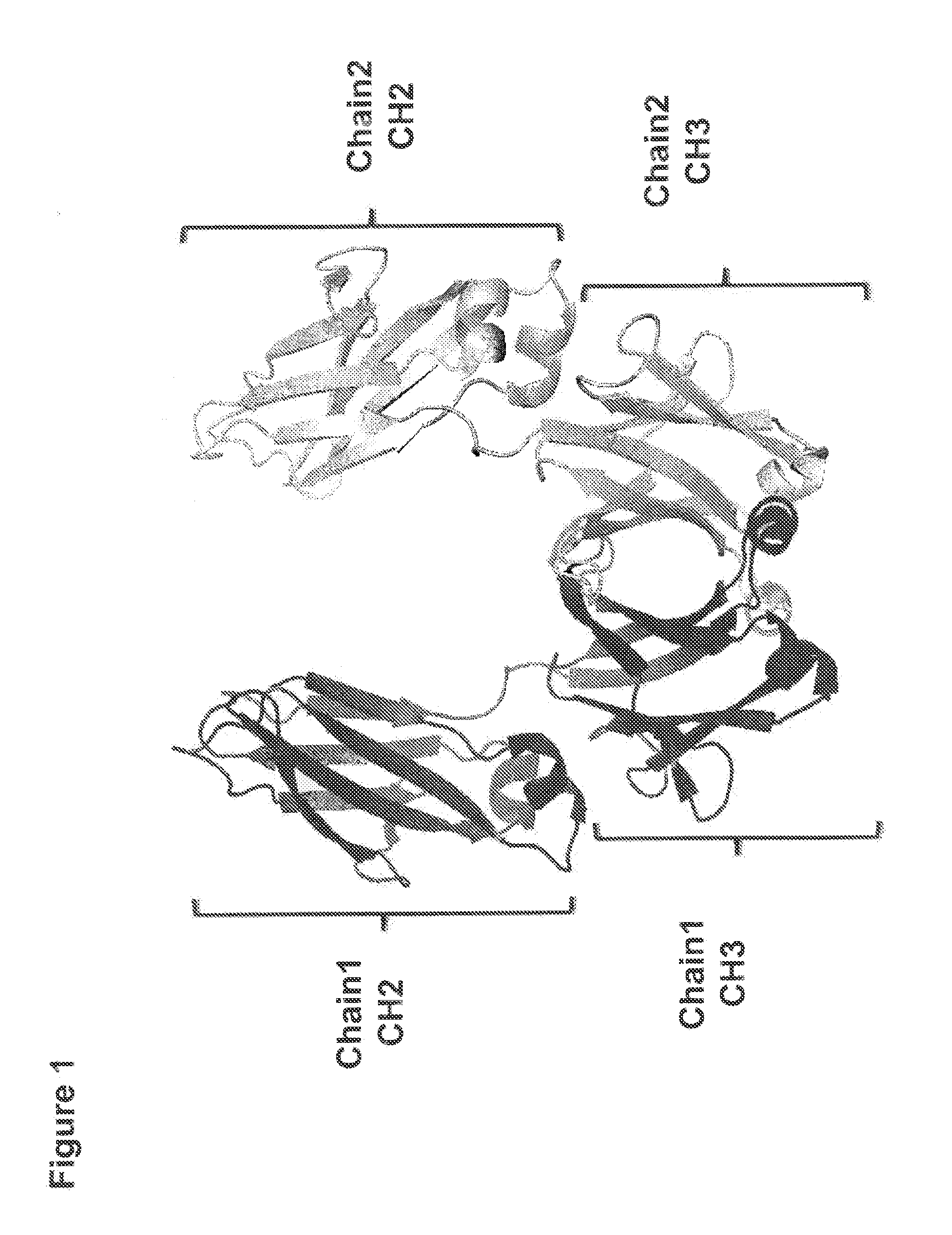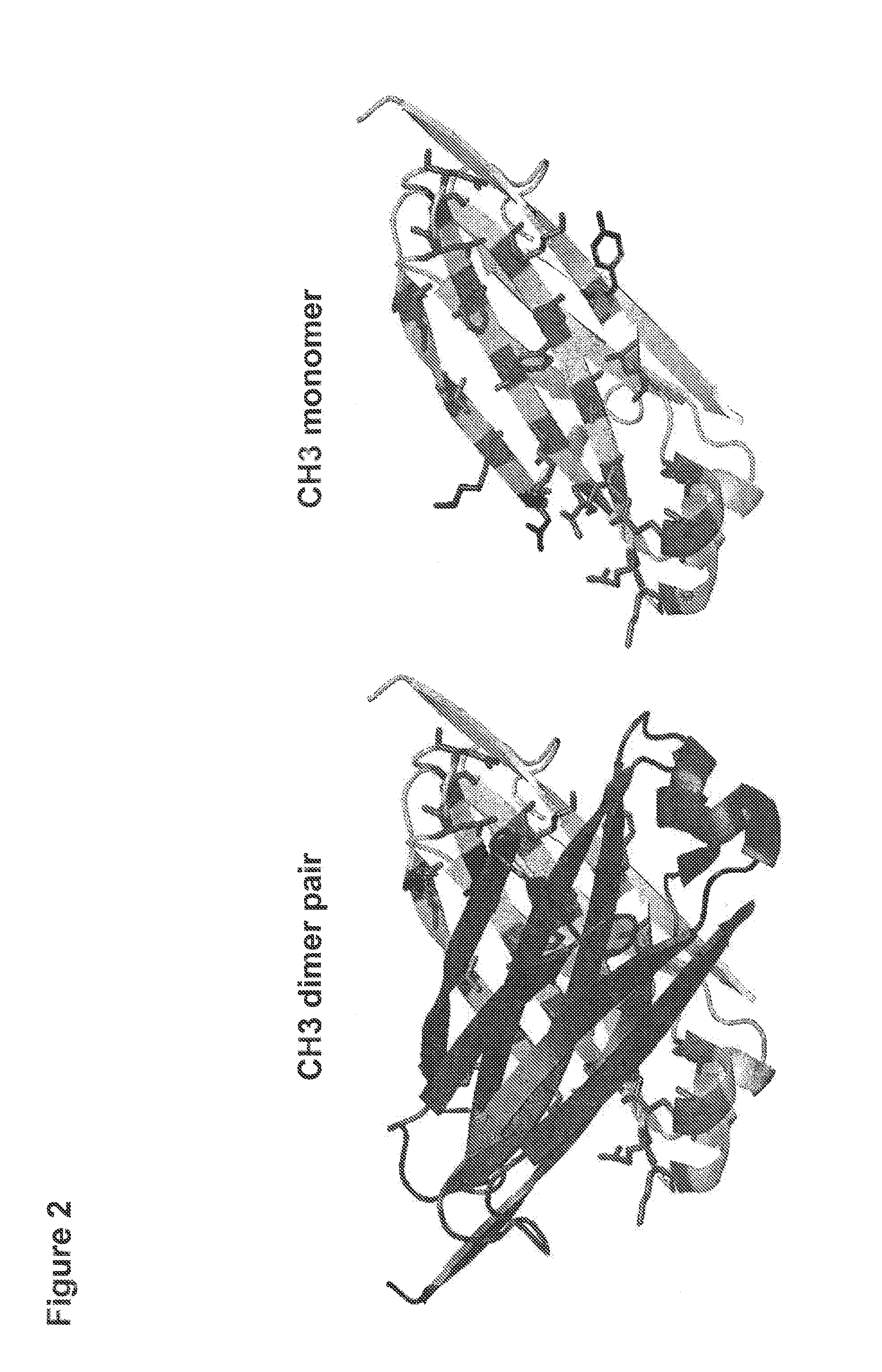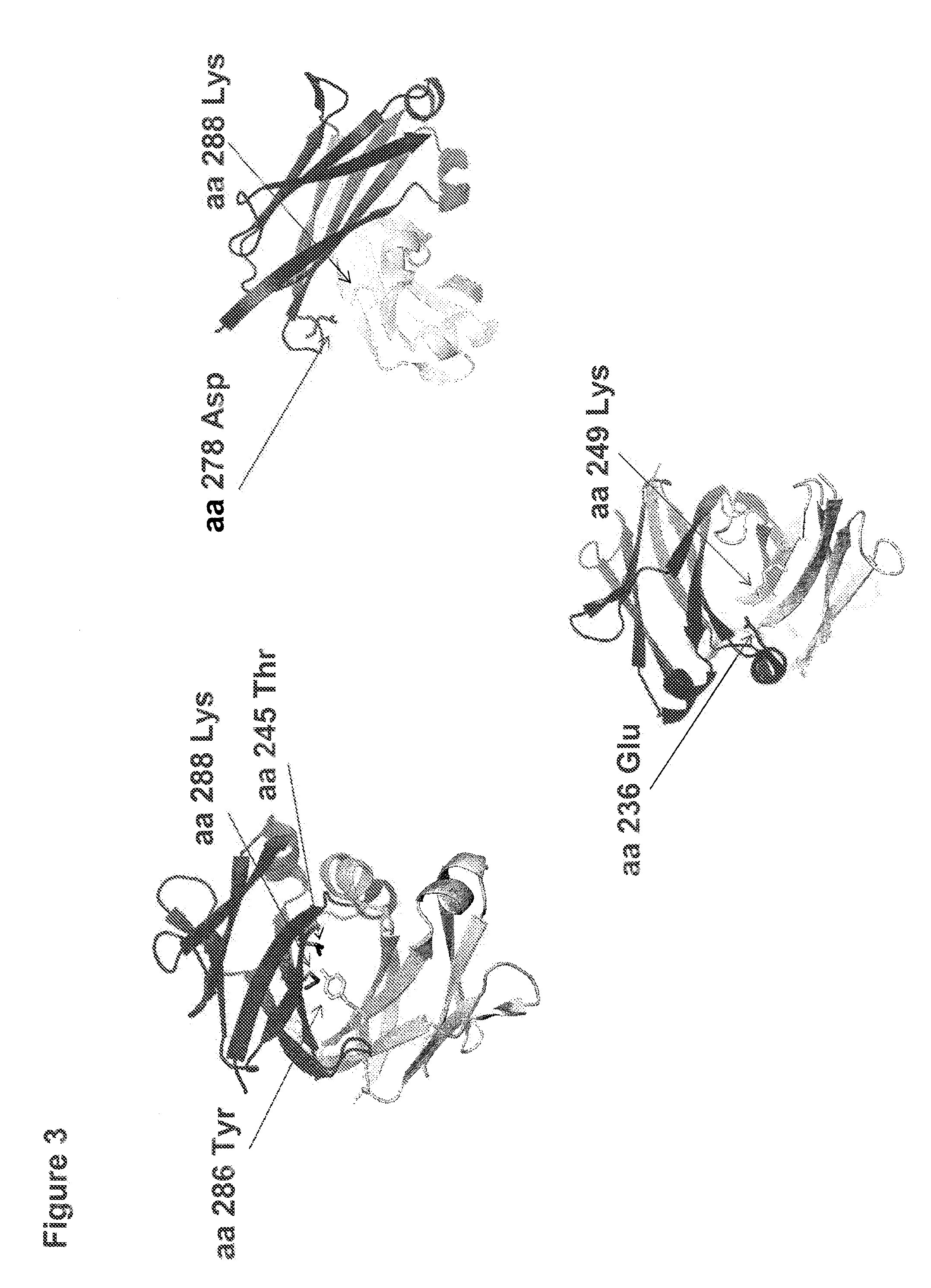Method for Making Heteromultimeric Molecules
a heteromultimeric and molecule technology, applied in the field of making heteromultimeric molecules, to achieve the effect of minimizing the mbsp 13b/var1 homodimer's ffraction
- Summary
- Abstract
- Description
- Claims
- Application Information
AI Technical Summary
Problems solved by technology
Method used
Image
Examples
example 1
Identification of Candidate Interactions within the Antibody Dimerization Interface
[0190]In order to better understand the nature of the dimerization interface between antibody heavy chain CH3 domains, the crystal structure of an antibody CH3 domain (structure first reported by Deisenhofer. J. (1981) Biochemistry, 20, 2361-2370) was examined. In this structure, the dimerization of the two Fc fragments is mediated by inter-chain interactions between CH3 domains (FIG. 1). The CH3 domain interaction surface contains a central region of hydrophobic residues flanked by residues of both hydrophilic or charged character. Within the core hydrophobic region there are conserved tyrosines which present hydroxyl groups for potential hydrophilic interactions, thus serving both as hydrophobic residues and also serving to enable hydrophilic interactions. FIG. 2 shows depictions of the structure of the dimerized CH3 domain. One strand is shaded darker than the other for clarity. The side chains of ...
example 2
Identification of Fc Variants that Selectively Heterodimerize
[0191]The ability of several types of modifications in the CH3 domain of an antibody was analyzed for their ability to generate spontaneously heterodimeric antibodies. It was reasoned that by selectively reducing hydrophilic interactions that occur between each CH3 strand it might be possible to make antibody homodimerization less favorable, and that by simultaneously introducing substitutions that render homodimerization unfavorable, but heterodimerization permissible, it might be possible to generate pairs of compatible Fc variants that selectively heterodimerize, but have very little propensity to homodimerize.
[0192]Therefore, a series of variant pairs were created and assessed for their ability to selectively form heterodimeric antibody. Amino acid substitutions were introduced into either a truncated heavy chain (termed mini-body) containing the linker and CH2-CH3 region of a heavy chain, or a full length antibody hea...
example 3
Binding of Bispecific Antibody to Two Different Targets
[0194]Enzyme-linked immunosorbent assay (ELISA) was conducted to examine the ability of bispecific antibody variant (Var2-Var3) to bind to antigens. ELISA plates were coated with either no antigen (−), anti-FLAG antibody (0.05 mg / ml, clone M2 from SIGMA), or recombinant human delta-like ligand 4 (DLL4) (0.1 mg / ml) (amino acids 27-519 with a carboxy-terminal 8×His tag). Coated plates were then incubated with control cell culture medium (negative control) or conditioned medium from cells transfected with expression vectors encoding Var2, Var3 and light chain L2 as indicated. After allowing binding to occur for 1 hour at room temperature, the plates were washed and bound antibody was detected by use of HRP-conjugated anti-human IgG secondary antibody. The bispecific antibody variant produced by co-expression of variants Var2 and Var3 possesses functional activity (FIG. 7). The Var3 (13A) heavy chain and paired light chain are able ...
PUM
| Property | Measurement | Unit |
|---|---|---|
| size | aaaaa | aaaaa |
| concentration | aaaaa | aaaaa |
| concentration | aaaaa | aaaaa |
Abstract
Description
Claims
Application Information
 Login to View More
Login to View More - R&D
- Intellectual Property
- Life Sciences
- Materials
- Tech Scout
- Unparalleled Data Quality
- Higher Quality Content
- 60% Fewer Hallucinations
Browse by: Latest US Patents, China's latest patents, Technical Efficacy Thesaurus, Application Domain, Technology Topic, Popular Technical Reports.
© 2025 PatSnap. All rights reserved.Legal|Privacy policy|Modern Slavery Act Transparency Statement|Sitemap|About US| Contact US: help@patsnap.com



